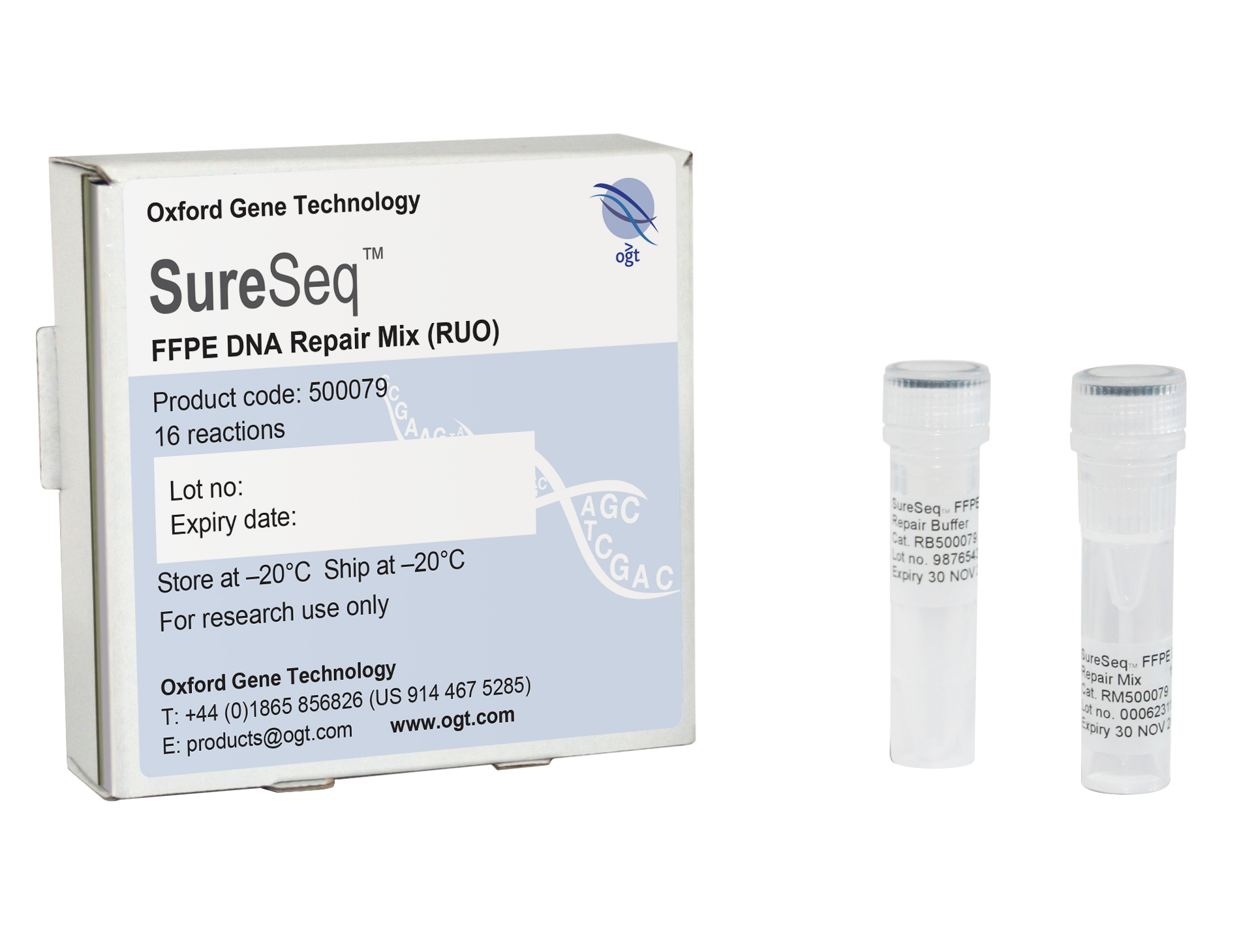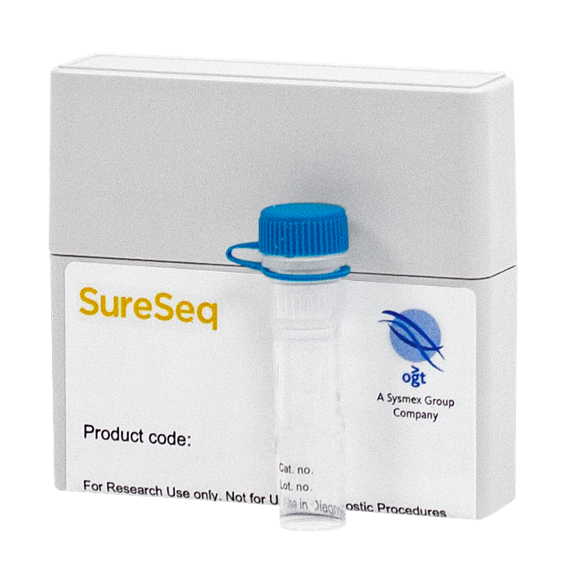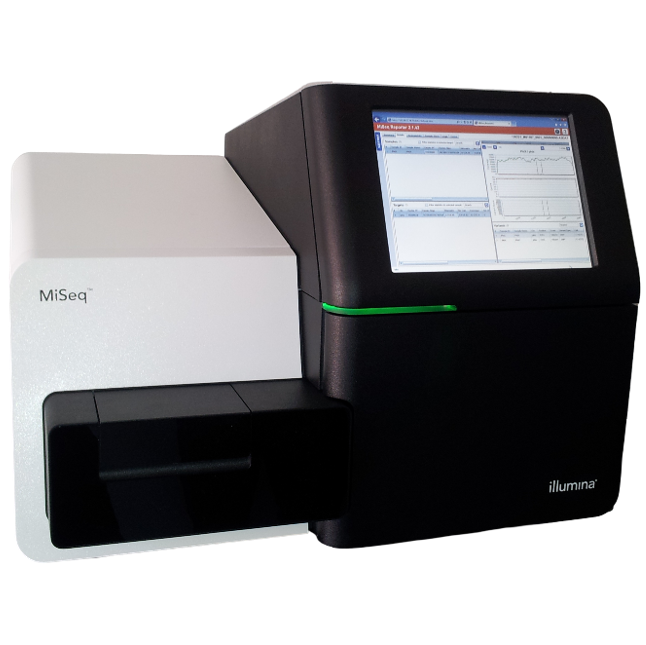
Don’t let the quality and quantity of your FFPE samples hold back your NGS discoveries. Detection of single nucleotide variants (SNVs) and insertion/deletions (indels) using next generation sequencing (NGS) is gaining increasing importance in research into cancer development and progression. Tissue biopsies are typically archived as formalin-fixed, paraffin-embedded (FFPE) blocks, which preserve tissue morphology and allow long-term storage at room temperature.
However, the methods used for fixation significantly damage and compromise the quality of nucleic acids from these samples. Consequently, it may be difficult to distinguish between true and damage-induced low-frequency mutations in such samples. The SureSeq™ FFPE DNA Repair Mix is a mixture of enzymes that has been optimised to remove a broad range of damage that can cause artefacts in sequencing data (Table 1 - below).

Remove artefacts caused by fixation and long-term storage

Get excellent sequencing data for confident variant calling from FFPE DNA

Preserve your precious samples and get meaningful results from as little as 100 ng of FFPE DNA
Obtaining high-quality NGS libraries from FFPE-derived DNA can be a challenging task due to DNA degradation. SureSeq FFPE DNA Repair Mix has been shown to significantly improve NGS library yields, preserving original complexity and delivering high-quality sequencing data for confident calling of variants with low variant allele frequency (VAF)(Figure 1).
One way of increasing NGS test sensitivity is to sequence to very high depths by reducing the number of samples in a run. This approach, however, increases the cost of sequencing reagents per sample processed. By repairing your DNA you can maximise depth of coverage as well as %OTR and therefore increase the sensitivity of your assay without compromising on cost or throughput (Figure 2).
Pathology labs often have to work with very limited amounts of material. Additionally, FFPE samples are usually irreplaceable. This leads to the need to reduce DNA input in downstream applications including NGS. Often amplicon-based approaches are chosen as they require very little input material. Unfortunately, due to PCR bias and lower complexity from smaller input amounts, these methods are not well suited to detect low-frequency mutations in heterogenous tumour samples.
Hybridisation-based approaches eliminate the problem of PCR bias providing much more reliable data but they typically require higher DNA inputs of 500 ng – 1 μg. Using the SureSeq FFPE DNA Repair Mix a reduction in the amount of starting material down to 100 ng depending on required depth of coverage is possible (Figure 3).


